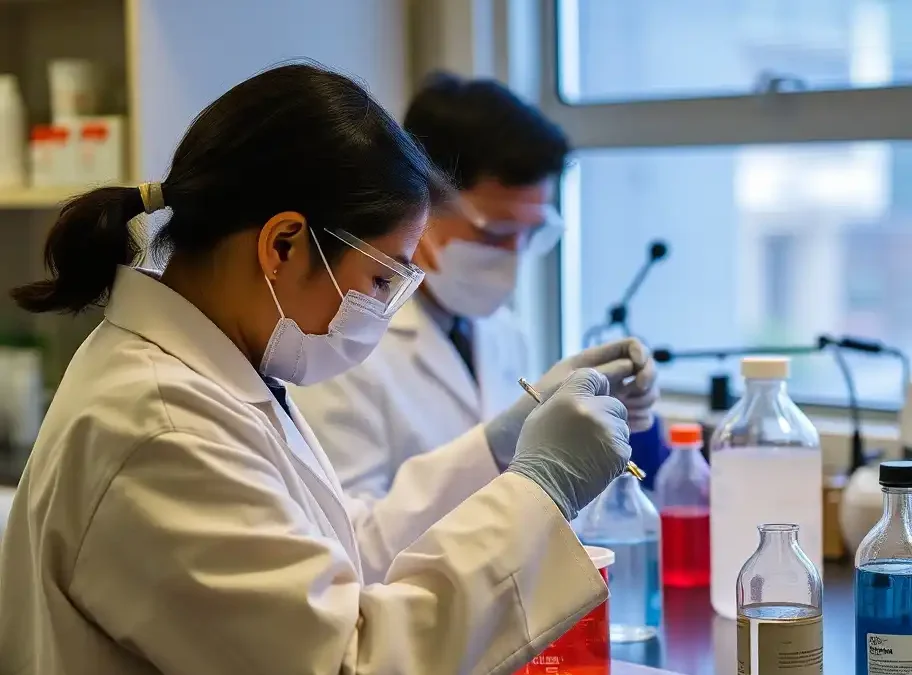Innovations in laboratory research often rely on specific compounds like TB 500 that have the potential to influence a wide range of studies, especially those related to healing and cellular processes. TB 500, a synthetic version of a naturally-occurring healing protein, has garnered attention for its intriguing effects on tissue repair and cellular migration. Both experienced researchers and those new to the field may seek guidance on how to effectively incorporate this peptide into their work. Below, we delve into the critical aspects of utilizing TB 500 in laboratory settings, ensuring accuracy and consistency in experimental outcomes.
Understanding TB 500 and Its Role in Lab Research
TB 500, a naturally occurring peptide in the body, is crucial for tissue protection, regeneration, and repair. By promoting cell growth and aiding in the formation of new blood vessels, TB 500 plays an important role in wound healing and tissue repair studies. Researchers focus on its ability to influence actin, a key protein for cellular structure, to understand its benefits in regenerative medicine.
TB 500’s anti-inflammatory properties make it valuable in immune response and sports medicine research, where scientists examine its potential in muscle recovery and managing chronic inflammation. These studies aim to uncover insights that could one day shape clinical applications and new treatment strategies.
Sourcing Quality TB 500 for Laboratory Use
Obtaining high-quality TB 500 peptides is crucial for accurate experimentation in the biochemical market. Researchers must choose providers who offer peptides synthesized to rigorous standards, ensuring their credibility through certifications, customer reviews, and third-party testing results. The peptides are typically supplied in lyophilized form, requiring correct reconstitution procedures to maintain stability. Researchers must follow the supplier’s protocols to maintain the substance’s integrity.
The cost of TB 500 can be a deciding factor for laboratories with limited budgets, but it’s essential not to compromise on the peptide’s quality. Bulk purchasing, loyalty programs, and academic discounts can help manage expenses without compromising quality. Reaching knowledgeable providers can provide insights into their product’s generation and application, aiding in navigating peptide use complexities and achieving successful research outcomes.
Setting Up a Controlled Environment for TB 500 Experiments
The optimal experimental setup for working with TB 500 is crucial due to its sensitivity and bioactivity. A controlled environment minimizes contamination and degradation risks, ensuring the peptide’s effects are attributed to its biochemical properties. Laboratories must establish sterile conditions using laminar flow hoods and stringent aseptic techniques.
Temperature regulation is essential for maintaining TB 500’s stability, with refrigeration required for storage and specific temperature requirements for each experiment phase. Humidity control is crucial to prevent the breakdown of peptides or the proliferation of unwanted biological agents. Limiting light exposure to prevent photodegradation and storing the peptide in amber vials or light-protective containers is recommended to extend its efficacy.
Best Practices for Handling and Storing TB 500 in the Lab
TB 500, a peptide, requires proper handling and storage to maintain its bioactivity. It should be stored as a lyophilized powder below 0°C and reconstituted with bacteriostatic water or solvent. Refrigeration is necessary for its efficacy. Minimizing freeze-thaw cycles is crucial, as repeated heating can lead to degradation. Single-use vials can be used to avoid this.
Proper labeling and documentation are essential for traceability and reproducibility in research. Safe disposal methods, following biohazard guidelines and local regulations, ensure environmental protection and reduce the risk of contamination. Cultivating best practices within the laboratory supports resource longevity and responsible research conduct.
Legal and Ethical Considerations for TB 500 Research Compliance
Legal and ethical considerations are crucial for laboratories conducting TB 500 research. Regulatory frameworks like the FDA and IRB oversee the biotechnological industry, ensuring safety and ethics. TB 500 should be classified and designated for research purposes only, maintaining transparency to avoid misuse.
Intellectual property rights are important for innovative applications, and proper licensing and patent considerations are necessary. Ethical research involving TB 500 requires informed consent, particularly in pre-clinical or clinical trials. Participants must be informed about the study’s nature, risks, and their rights to withdraw consent, ensuring the dignity and safety of subjects while advancing science.
Altogether, engaging in TB 500 research requires meticulous attention to the peptide’s handling, regulatory adherence, and operational best practices within the laboratory. These guidelines ensure the integrity and reproducibility of experiments—key tenets of scientific progress. By prioritizing quality, compliance, and practical wisdom, laboratories can explore the potential of TB 500 with confidence and credibility.
















